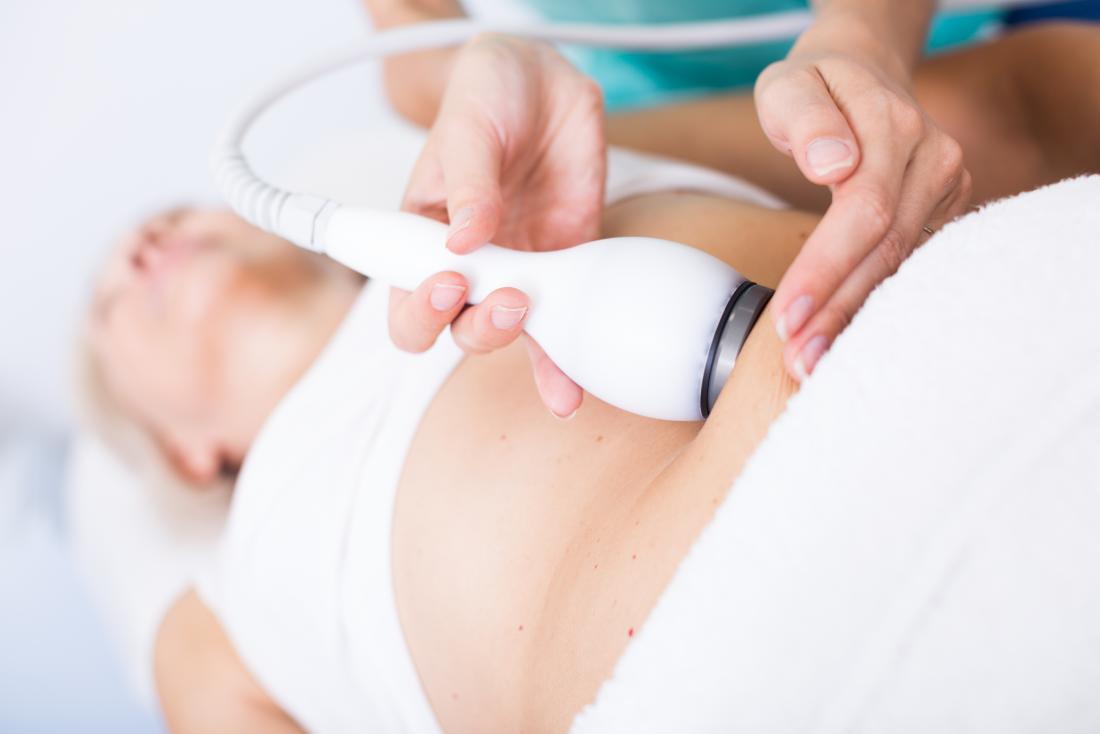4 Common Myths About Laser Hair Removal
If you’re like most people, you probably struggle with unwanted hair. There are plenty of at-home methods of getting rid of hair, but none that are as effective as many of us would like. Shaving is extremely short term, tweezing and waxing can be more painful than they’re worth, and hair removal creams can irritate the skin. Still, many of us deal with these methods to try and get rid of our unwanted hair. A far better solution is laser hair removal, a popular non-invasive cosmetic surgery in Pennsylvania.
For stubborn unwanted hair, laser hair removal is the best thing you can do. Like most cosmetic procedures, there are many rumors surrounding laser hair removal that might make many people who could benefit from it afraid to give it a chance.
Here, we debunk four common myths about laser hair removal so you have a better understanding of what to expect from the treatment at Dr. Bruno’s office.
Myth: "Your Hair Will Grow Back"
One common laser hair removal myth is that all of your hair will grow back after. This can make it seem not worth it to go out of your way and spend money on laser hair removal if it only comes right back. Some hair does grow back after laser hair removal, but not in the way many think. For example, your hair can come back days after shaving or waxing, but it can take months or even up to a year for hair to grow back after laser treatment. While everyone is different, most people can expect a different type of hair to grow back after. When hair grows back after laser treatment, it’s often much softer and thinner than your original hair. After enough laser treatments with one of the best cosmetic surgeons in Scranton, PA, hair might eventually stop growing back.
Myth: "It Can Be Painful and Damage Skin"
You might often hear that laser hair removal is painful to go through. Some people might feel slight discomfort during the procedure, especially those who are sensitive to pain to begin with. While a pinprick feeling is somewhat common, it’s only mild and less painful than waxing. Topical treatments to reduce this discomfort are sometimes an option as well. Laser treatments also won’t cause damage to the skin in a majority of cases, but this is also something to discuss with your plastic surgeon in PA beforehand if you’re worried. Some redness and small bumps will occur after your treatment, but they fade quickly and there’s no downtime required after the procedure.
Myth: "It Only Works for Certain Skin Tones"
Many people think they can’t get laser hair removal done because they have the wrong skin tone for it. Laser treatments have come a long way over the past few years, so skin tone isn’t a major issue when it comes to hair removal. All skin tones and types can benefit from receiving laser hair treatment, although the tone of a person’s skin might affect how many treatments they’ll need. Darker skin tones absorb more of the laser during treatment than lighter skin tones do, so while it’s still an effective way of removing hair, you might need a few extra sessions at Bruno Plastic Surgery depending on your skin tone.
Myth: "Laser Hair Removal Doesn’t Work for Some Hair Types"
People with especially thick hair may have been told that laser hair removal won’t be effective in removing it. Laser hair removal works differently for everyone, and while the number of sessions needed varies, most people will find that plastic surgeons in Northeast PA can effectively remove hair. For those with thick hair, you might just need a few more sessions to remove all of the hair. Laser hair removal also works for most hair colors, with the expectation of white hair, as it has no pigmentation.
Frequently Asked Questions About Laser Hair Removal
What is laser hair removal, and how does it work?
Laser hair removal is a popular cosmetic procedure that uses concentrated light beams to remove unwanted hair. The laser emits a specific wavelength of light that is absorbed by the pigment (melanin) in the hair follicles. This light energy is converted into heat, which damages the hair follicle and inhibits future hair growth. The treatment targets hair in its active growth phase (anagen), so multiple sessions are required to effectively treat all hair follicles. The number of sessions needed varies depending on factors such as hair color, hair thickness, skin type, and the treatment area. Laser hair removal is effective on various body areas, including the face, legs, arms, underarms, bikini line, and back. The procedure is relatively quick and can provide long-lasting results, although periodic maintenance sessions may be necessary to keep the treated areas hair-free.
What can I expect during a laser hair removal session?
During a laser hair removal session, you can expect a relatively straightforward and quick process. Before the treatment begins, the area to be treated will be cleaned, and a cooling gel or numbing cream may be applied to enhance comfort. You will be provided with protective eyewear to shield your eyes from the laser light. The practitioner will use a handheld laser device to target the hair follicles, delivering controlled pulses of light. You might feel a sensation similar to a rubber band snapping against your skin, but most people find the discomfort manageable. The duration of the session depends on the size of the treatment area; smaller areas like the upper lip may take just a few minutes, while larger areas like the back or legs can take up to an hour. After the session, you might experience some redness and swelling, similar to a mild sunburn, which typically subsides within a few hours to a couple of days.
How many laser hair removal sessions are needed to see results?
The number of laser hair removal sessions required to see optimal results varies from person to person and depends on several factors, including hair color, hair thickness, skin type, and the treatment area. On average, most individuals need between 6 to 8 sessions spaced about 4 to 6 weeks apart to achieve significant hair reduction. This is because laser hair removal targets hair in its active growth phase (anagen), and not all hair follicles are in this phase simultaneously. Additional maintenance sessions may be needed once or twice a year to maintain the results, as hormonal changes or other factors can sometimes stimulate new hair growth. During your initial consultation, your practitioner will assess your hair and skin characteristics and provide a personalized treatment plan, including an estimated number of sessions needed to achieve your desired outcome.
Are there any side effects or risks associated with laser hair removal?
Laser hair removal is generally safe and well-tolerated, but like any medical procedure, it comes with potential side effects and risks. Common side effects include temporary redness, swelling, and mild discomfort in the treated area, similar to a mild sunburn. These symptoms usually resolve within a few hours to a couple of days. Some individuals may experience temporary changes in skin color (hyperpigmentation or hypopigmentation), which typically fade over time. Rare but more serious risks include blistering, burns, and scarring, especially if the procedure is not performed correctly or if post-treatment care instructions are not followed. To minimize risks, it is crucial to have the procedure performed by a qualified and experienced practitioner. Inform your provider of any medical conditions, medications, or skin sensitivities you have, as these can affect your suitability for the treatment and your risk profile. Following pre- and post-treatment care instructions diligently can also help reduce the likelihood of adverse effects.
Who is a good candidate for laser hair removal?
A good candidate for laser hair removal is typically someone who has unwanted hair they wish to reduce or eliminate and has realistic expectations about the results. The procedure is most effective for individuals with light to medium skin tones and dark, coarse hair, as the laser targets the melanin in the hair follicles. However, advancements in laser technology have made it possible to treat a wider range of skin tones and hair types. During your consultation, your practitioner will assess your skin and hair characteristics to determine if you are a suitable candidate. People with certain medical conditions, skin disorders, or those taking specific medications that increase photosensitivity may not be ideal candidates. Pregnant or breastfeeding women are also generally advised to postpone treatment. Your practitioner will review your medical history and discuss any potential risks to ensure laser hair removal is safe and appropriate for you.
How should I prepare for a laser hair removal session?
Proper preparation for a laser hair removal session is essential to ensure the best possible results and minimize potential side effects. Before your appointment, avoid sun exposure, tanning beds, and self-tanning products for at least two weeks, as tanned skin can increase the risk of complications. Refrain from waxing, plucking, or electrolysis in the treatment area for at least four weeks, as these methods remove the hair follicle that the laser targets. Shaving the treatment area a day or two before your session is recommended, as it leaves the hair shaft intact while removing hair above the skin surface. On the day of your appointment, ensure your skin is clean and free of lotions, creams, or makeup. If you are prone to discomfort, discuss the use of a numbing cream with your practitioner. Following these preparation steps can help ensure a safe and effective treatment session with optimal results.
For expert laser hair removal from a board-certified plastic surgeon in NEPA, contact Bruno Plastic Surgery for a consultation!
3 Benefits of Non-Surgical Fat Removal
Many patients who come into Bruno Plastic Surgery ask for help with the shapes of their bodies. It is not exactly that being overweight is always the problem. Sometimes men and women just suffer from stubborn fat around the chin or at the abdomen that prevents them from enjoying the bodies they want. Whether it is a past pregnancy, weight loss, or weight gain, maybe the skin around your stomach just sags and looks stretched in a way that is unsightly to you, and diet and exercise have not been helping.
In a situation like that, you may find yourself looking at plastic surgery near Scranton, PA, and wondering what can be done. Maybe you have heard of what plastic surgery has been able to accomplish for people you know, but invasive procedures hold a negative place in your mind. To that end, Bruno Plastic Surgery would like to recommend non-surgical fat removal processes, particularly CoolSculpting, as one possible solution to your issue
In this post, we’ll first explain how CoolSculpting works and then detail three ways you can benefit from this kind of procedure.
How Does CoolSculpting Work?
CoolSculpting is an easy enough process to understand, especially when we boil it down to its essentials. The most direct way to explain it is that it freezes fat cells so they die and are absorbed by the body. Let us elaborate.
CoolSculpting is also known as cryolipolysis. Surgeons use an applicator that presses down onto the fat you want to eliminate and cools it with special plates. Those plates freeze the fat cells beyond a point that the cells can stand, thereby killing them. Over the next few weeks, the body starts to dispose of those dead cells, and that process should be complete after about three months. At that time, the fat you wanted to get rid of should be entirely gone
If this process seems incredible, trust that Bruno’s plastic surgeons in Northeast PA can handle the job.
How Can Non-Surgical Fat Removal Help?
Given that, how can non-surgical fat removal such as CoolSculpting help you? We lay out three ways below.
No Surgery Is Required
The first and most obvious benefit of using non-surgical fat removal techniques is that no invasive surgery is needed. To some people, this is more than enough of a reason to go for a non-surgical method. Even those people who are enthusiastically seeking cosmetic surgeons in Scranton, PA, to correct issues with their body may not love the idea of being put under anesthesia or being cut with a scalpel.
Those concerns are understandable. Surgery is not for everyone. Particularly in the case of elective surgeries such as cosmetic procedures, if there is a less invasive option, many patients lean toward that. Additionally, a treatment such as CoolSculpting is typically an outpatient procedure, so patients can go home the same day rather than taking time to recover in a hospital after traditional surgery.
Non-Surgical Fat Removal Can Offer More Consistency
Fat removal can be done surgically or not, and each type of method achieves the same end. However, once educated on the subject, some patients may decide non-surgical methods are for them because of how those methods seek out fat cells. The applicator we mentioned earlier kills fat cells and nothing else.
Meanwhile, surgical methods of fat removal rely on a surgeon’s steady hand to do the work. If you are someone who is already disposed not to like the idea of surgery, you may respond better to the precise targeting of CoolSculpting more than another, more invasive process of excess fat removal.
Remember, you always have options available to you when seeking plastic and reconstructive surgeons in Northeast PA.
Non-Surgical Fat Removal May Be More Available
The third and last benefit of non-surgical fat removal partially ties into the first on the list: more people may be able to have fat removed through non-surgical means than through invasive surgery. What does that mean? Some people have medical conditions that could prevent them from having surgery, or that at least could put them more at risk when undergoing that surgery, i.e. sensitive immune systems or heart problems.
Non-surgical fat removal procedures, such as CoolSculpting, can remove some of those barriers for people who want stubborn fat removed but cannot medically consider surgery. Our job as cosmetic surgeons in Lackawanna County is to help make our patients happy by delivering the procedures they want to be comfortable in their own bodies. Therefore, we want as many patients as possible to feel they can come to Bruno Plastic Surgery for the solutions they need.
Plastic Surgeons in Northeast PA
When CoolSculpting or another type of non-surgical fat removal procedure is the answer you want for your body’s tough fat, come to Bruno Plastic Surgery. We understand that everyday happiness can be strongly intertwined with body image. It is our job to make your dreams a reality.
Contact us to learn more about all of our procedures and other practices. We will be happy to consult with you on everything we offer.



